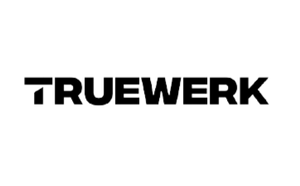Launching a new product is a crucial moment for any business and a successful product launch can set the stage for long-term success. A well-executed launch builds anticipation, drives initial sales, and positions your brand in the marketplace.
Here’s a comprehensive guide on how to run a successful product launch campaign from start to finish.
1. Set Clear Goals and Objectives
Before diving into the tactics, you need to define the goals of your product launch. These objectives will guide your entire campaign and provide benchmarks for success.
- What Are Your Sales Goals?
Are you aiming for a certain number of units sold in the first month?
- Who Is Your Target Audience?
Be specific about who you’re trying to reach and what problem your product solves for them.
- What Are Your Key Performance Indicators (KPIs)?
Examples could include website traffic, email sign-ups, social media engagement, or lead generation. To dive deeper into marketing strategy topics, check out our Digital Strategy Blog.
2. Understand Your Target Audience
A successful product launch starts with a deep understanding of your target audience. Research your audience’s pain points, preferences, and buying behaviors.
- Create Buyer Personas: Develop detailed profiles of your ideal customers, including their demographics, challenges, and motivations.
- Gather Feedback: Conduct surveys, interviews, or focus groups with potential customers to understand their needs and concerns.
This research will help you tailor your messaging, product positioning, and marketing channels for maximum impact.
3. Develop a Unique Value Proposition (UVP)
Your Unique Value Proposition (UVP) is the core message that explains why your product is different and why customers should care. It should highlight the main benefits of your product and the problem it solves.
Steps to Craft a Strong UVP:
- Focus on what makes your product unique in the market.
- Clearly communicate the tangible benefits your customers will experience.
- Keep it concise and memorable.
Your UVP will be the foundation for all your marketing and messaging efforts during the launch.
4. Create a Product Launch Timeline
A successful launch requires a well-planned timeline. From initial product development to post-launch activities, each phase should be carefully mapped out.
- Pre-launch (2-3 months before launch): Start building awareness with teaser campaigns, content marketing, and influencer partnerships.
- Launch day: Execute your marketing blitz, focusing on PR, social media, paid ads, and email marketing.
- Post-launch (1-2 months after launch): Continue engagement with customers, offer promotions, and gather feedback.
Tools:
- Use project management tools like Trello, Asana, or Monday.com to keep track of tasks, deadlines, and team responsibilities.
5. Develop a Multi-Channel Marketing Strategy
To reach your audience effectively, you need to create a coordinated multi-channel marketing strategy. This ensures your message is seen in multiple places, increasing the chances of engagement.
- Social Media: Build buzz through organic posts, paid ads, live streams, and influencer collaborations.
- Email Marketing: Segment your list and send personalized email sequences leading up to and during the launch.
- Content Marketing: Create blog posts, case studies, or explainer videos that highlight your product’s features and benefits.
- Public Relations (PR): Distribute press releases and pitch media outlets to gain coverage from industry publications and bloggers.
- Paid Advertising: Use PPC, social ads, and display advertising to increase reach and drive targeted traffic.
Each channel should be used strategically to amplify your message and guide customers through the buying journey.
6. Build Anticipation with a Pre-Launch Campaign
Start generating excitement about your product before the official launch day. A pre-launch campaign helps create awareness, build an audience, and engage potential customers early.
- Teasers on Social Media: Share sneak peeks, behind-the-scenes content, or countdowns to build anticipation.
- Early Access Sign-ups: Create a landing page where users can sign up to receive exclusive updates or early access to your product.
- Email Drip Campaign: Send out a series of pre-launch emails to nurture leads, offering them insights into your product’s development and benefits.
- Influencer Teasers: Have influencers talk about your upcoming product before it launches to their audience.
The goal is to build enough curiosity and interest so that potential buyers are ready to take action once the product becomes available.
7. Prepare for Launch Day
Launch day is your big moment, and you’ll need to execute flawlessly. Make sure every detail is planned and ready.
- Announce the Product on All Channels: Push out your official product announcement through social media, email, blog posts, and PR.
- Run Paid Ads: Launch targeted paid advertising campaigns to drive traffic to your product page.
- Engage in Real-Time on Social Media: Respond to comments, questions, and mentions in real-time to maximize engagement.
- Host a Launch Event or Live Stream: Consider hosting a virtual event, such as a webinar or Instagram Live, to showcase your product and engage with your audience.
Make sure your website, product page, and customer support teams are prepared to handle an influx of visitors and inquiries.
8. Monitor and Measure Success
After the launch, it’s essential to measure how well your campaign performed and identify areas for improvement.
- Website Traffic: Measure how many visitors came to your site, and which channels drove the most traffic.
- Sales and Revenue: Track how many units were sold and whether you met your revenue goals.
- Engagement: Monitor social media engagement, including likes, shares, and comments.
- Customer Feedback: Gather feedback from early customers about their experience with the product.
Use analytics tools like Google Analytics, social media insights, and CRM data to assess the success of your campaign. This will help you refine your approach for future launches.
9. Post-Launch Follow-Up and Engagement
The work doesn’t stop after launch day. Keep the momentum going by nurturing your relationship with new customers and continuing to promote the product.
- Thank Your Customers: Send personalized thank-you emails to early buyers or offer exclusive discounts for their next purchase.
- Gather User-Generated Content: Encourage customers to share photos, videos, or reviews of your product and feature them on your social channels.
- Ongoing Promotions: Run time-limited promotions, discounts, or bundles to keep sales momentum high.
Staying engaged with your audience post-launch helps build long-term customer loyalty and keeps your product top-of-mind.
Conclusion
A successful product launch campaign is all about planning, coordination, and execution. By setting clear goals, understanding your audience, creating a compelling UVP, and leveraging a multi-channel marketing strategy, you can create excitement, drive sales, and position your product for long-term success.
The key is to maintain momentum before, during, and after launch day, ensuring that your audience remains engaged and loyal to your brand.

















